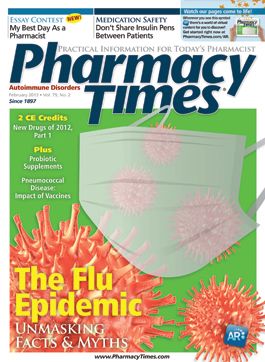Publication
Article
Pharmacy Times
Case Studies
Case 1
EW is a 58-year-old woman with a past history of hypertension and type 2 diabetes who presents to the emergency department complaining of nausea, shortness of breath, and chest discomfort radiating down her left arm. EW is determined to be suffering an acute coronary syndrome (ACS) and is treated with primary percutaneous coronary intervention (PCI). After PCI, her interventional cardiologist starts her on aspirin 325 mg/day and clopidogrel 75 mg/day. Two days later, the pharmacist recommends EW undergo “on-P2Y12 (clopidogrel)” platelet reactivity testing. The test comes back with a platelet reaction unit (PRU) value of 245. EW is not taking any medications that could potentially interact with her antiplatelet therapy.
What is the significance of this result and how might the pharmacist use it to optimize EW’s care?
Case 2
AQ is an otherwise healthy 23-year-old woman who comes to the outpatient clinic complaining of painful urination and flank pain for the past 2 days. During her visit, AQ’s temperature is found to be elevated at 101.6° F. A urine dipstick test is performed and comes back positive for pyuria (white blood cells in the urine) and leukocyte esterase. AQ is diagnosed with having an uncomplicated pyelonephritis. Her treating physician determines she does not need to be admitted, but orders her urine be cultured and bacterial susceptibility tests be performed.
What is the recommended treatment course for AQ?
ANSWERS
Case 1:
Platelet reactivity assays can be used to identify patients responding poorly to clopidogrel (or other P2Y12 inhibitors). Unlike genetic testing, platelet reactivity assays provide rapid results and provide information about how a patient is responding. Common causes of high on-clopidogrel platelet reactivity include suboptimal inhibition of platelet aggregation due to polymorphisms of the cytochrome P450 2C19 and ABCB1 genes, poor medication adherence, and drug interactions. The 2012 American College of Cardiology Foundation/American Heart Association guidelines for managing patients with unstable angina/non-ST—segment myocardial infarction include a recommendation for platelet function testing to determine platelet inhibitory response if the results may alter management. Multiple clinical studies suggest a PRU value greater than or equal to 230 while taking clopidogrel is predictive of poorer response.
Given EW’s high PRU (>230), switching from clopidogrel to an alternative antiplatelet agent such as ticagrelor or prasugrel would seem reasonable, as both have been shown to overcome high on-clopidogrel platelet reactivity. If ticagrelor (at 90 mg twice daily) is chosen, it is important to remember that an aspirin dose less than 100 mg should be used, as higher doses have been associated with decreased ticagrelor effectiveness.
Case 2:
According to current Infectious Disease Society of America (IDSA) treatment guidelines, the empiric antibiotic regimen of choice for treating most uncomplicated pyelonephritis patients not requiring hospitalization is oral ciprofloxacin given 500 mg twice daily for 7 days (with or without an initial 400 mg dose of intravenous ciprofloxacin). However, when the prevalence of resistance of community uropathogens to fluoroquinolones is known to exceed 10%, an initial 1-time intravenous dose of a long-acting parenteral antimicrobial (ie, 1 g of ceftriaxone) is recommended. Alternative antibiotic regimens include oral trimethoprim-sulfamethoxazole (160/800 mg twice-daily for 14 days) or an oral beta-lactam agent, but high levels of resistance make the prior less favorable, and oral beta-lactams are considered to be less effective than fluoroquinolones for treatment of pyelonephritis and also require longer (10-14 day) treatment durations.
Based upon IDSA recommendations, and with the knowledge that fluoroquinolone resistance rates are still less than 10% in most parts of North America, oral ciprofloxacin given 500 mg twice daily for 7 days would appear to be the optimal regimen for AQ.
function showAnswer() {document.getElementById("answer").style.display = 'block';document.getElementById("link").style.display = 'none';}
Dr. Coleman is associate professor of pharmacy practice and director of the pharmacoeconomics and outcomes studies group at the University of Connecticut School of Pharmacy. Dr. Limone is a pharmacy fellow in the HOPE Collaborative Group at the University of Connecticut School of Pharmacy and Hartford Hospital.







